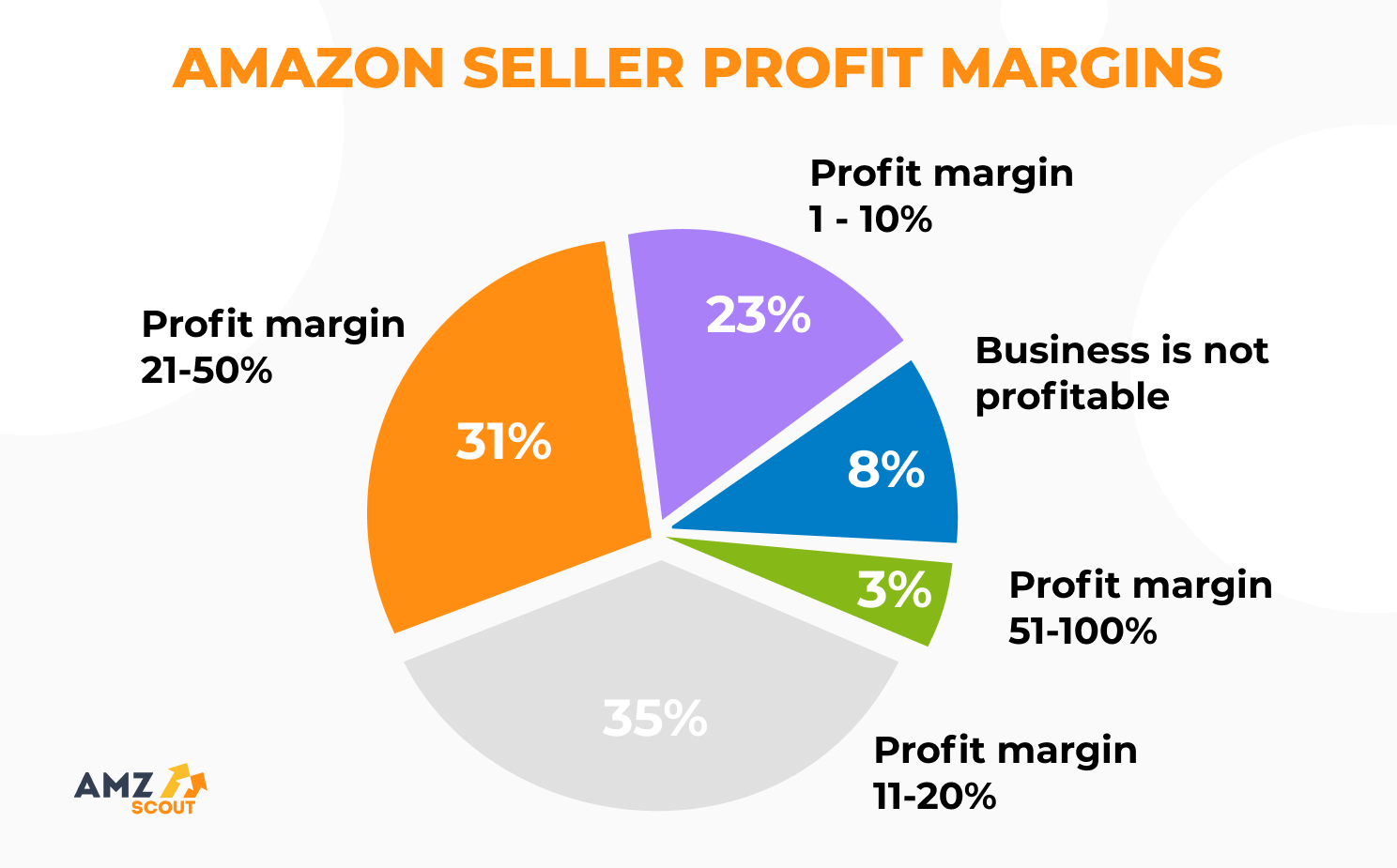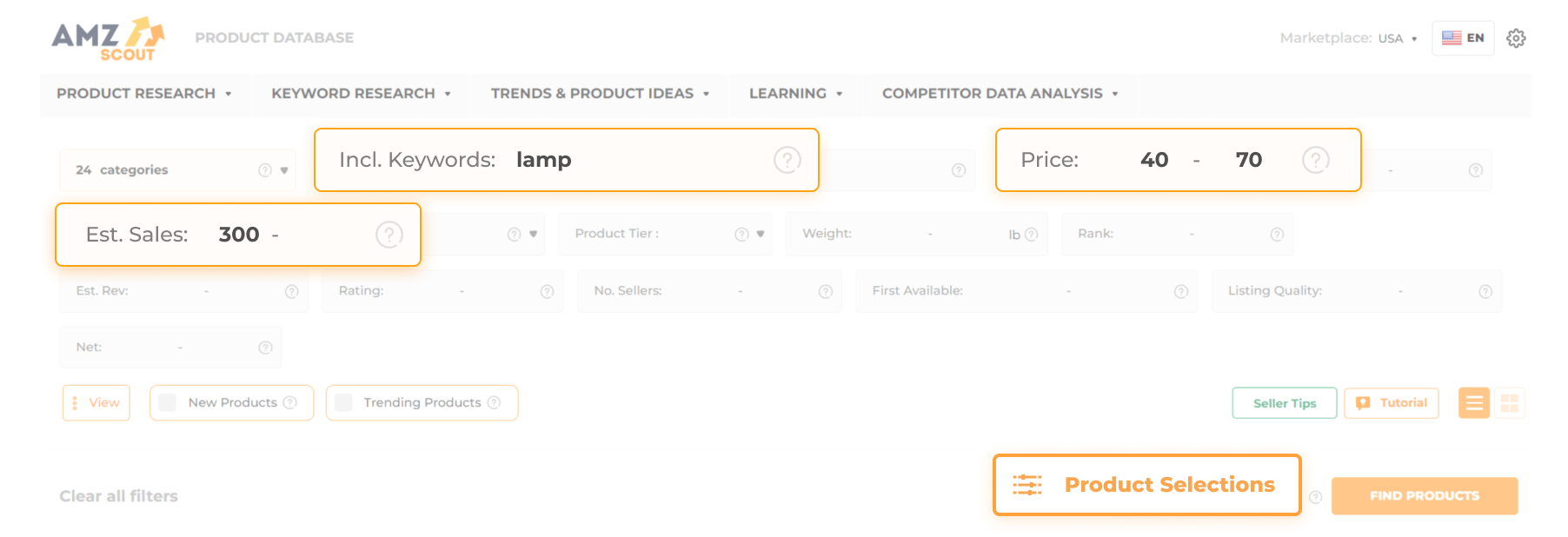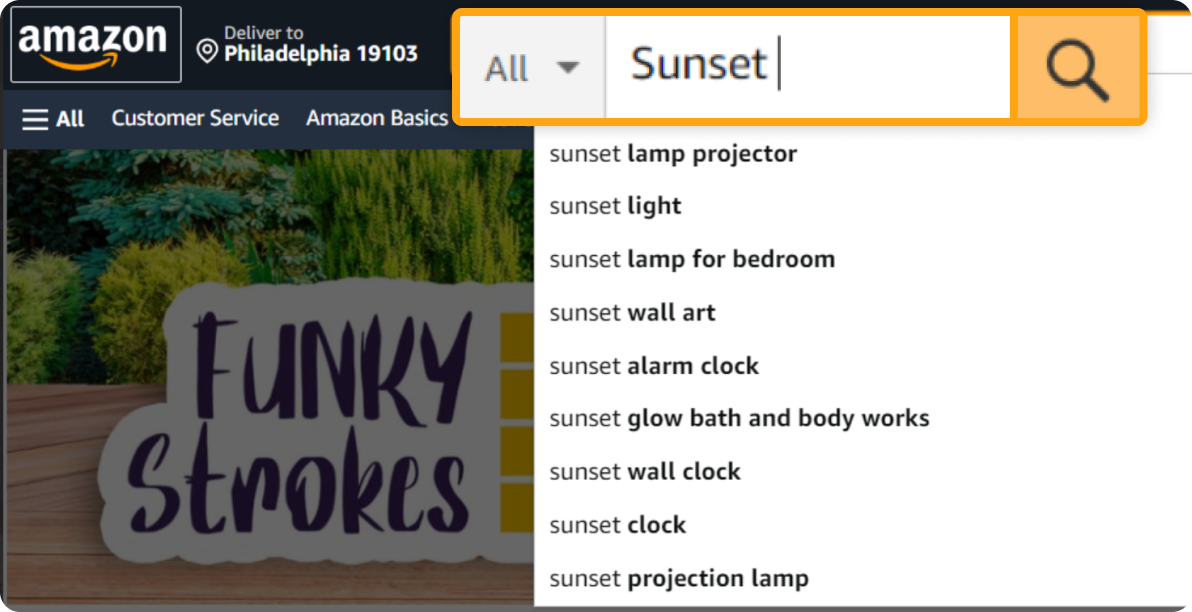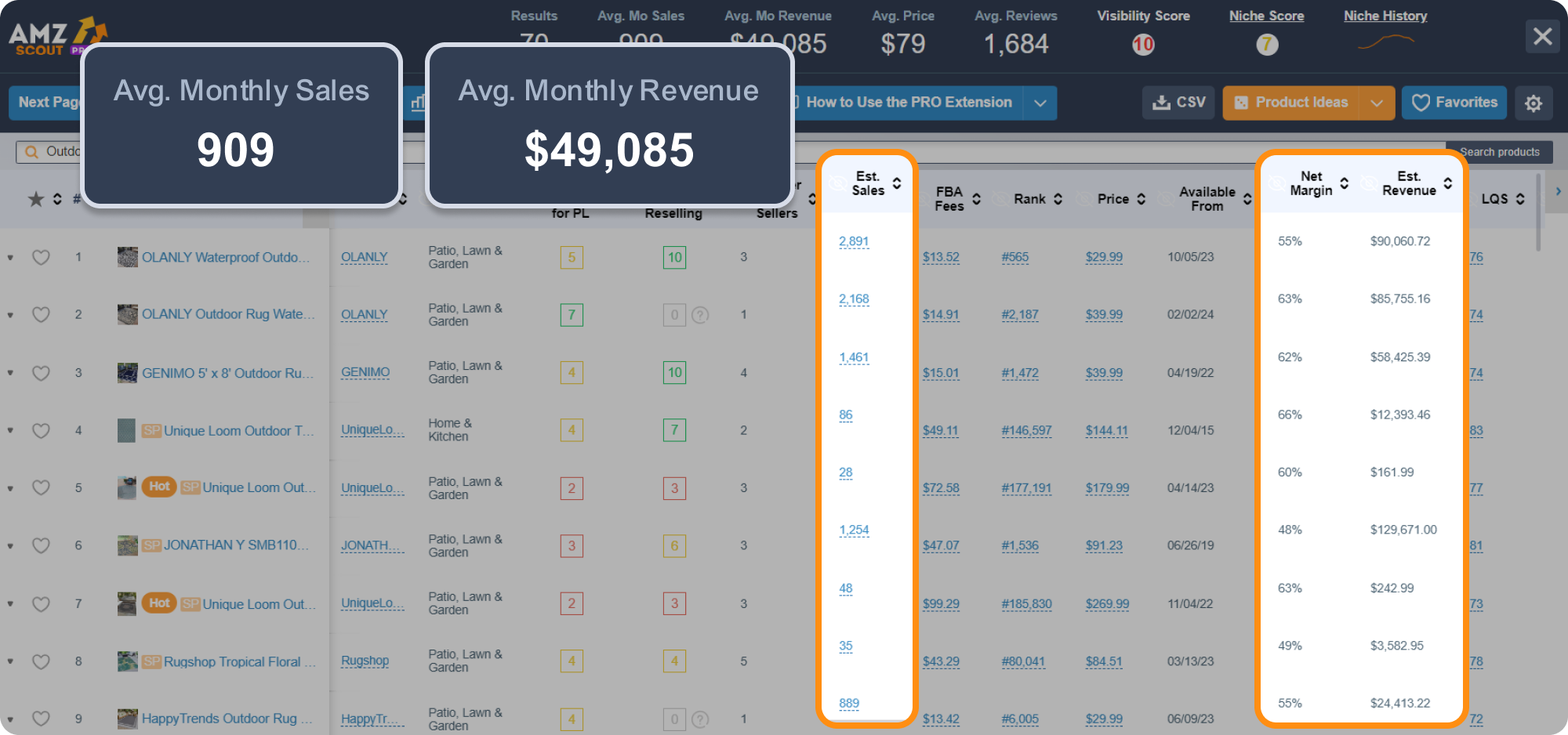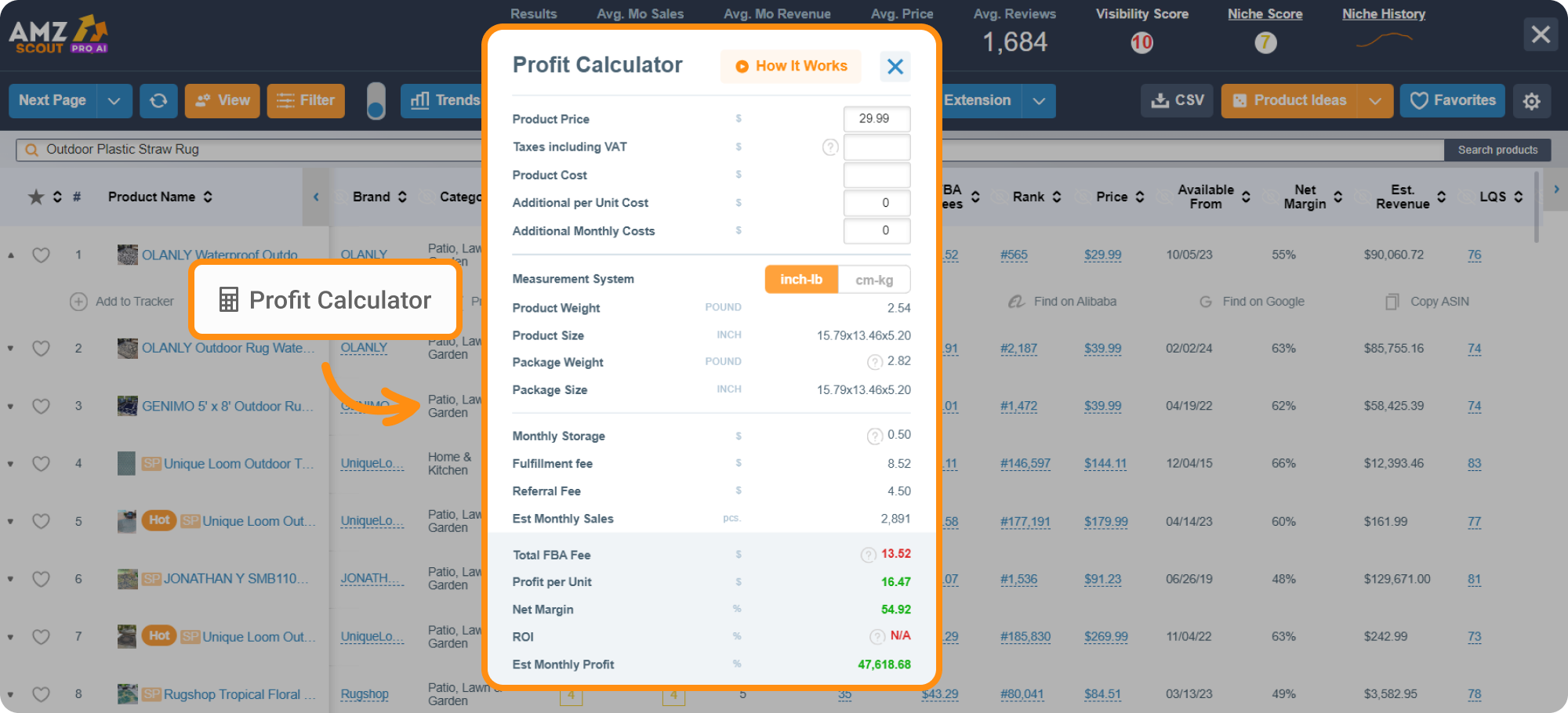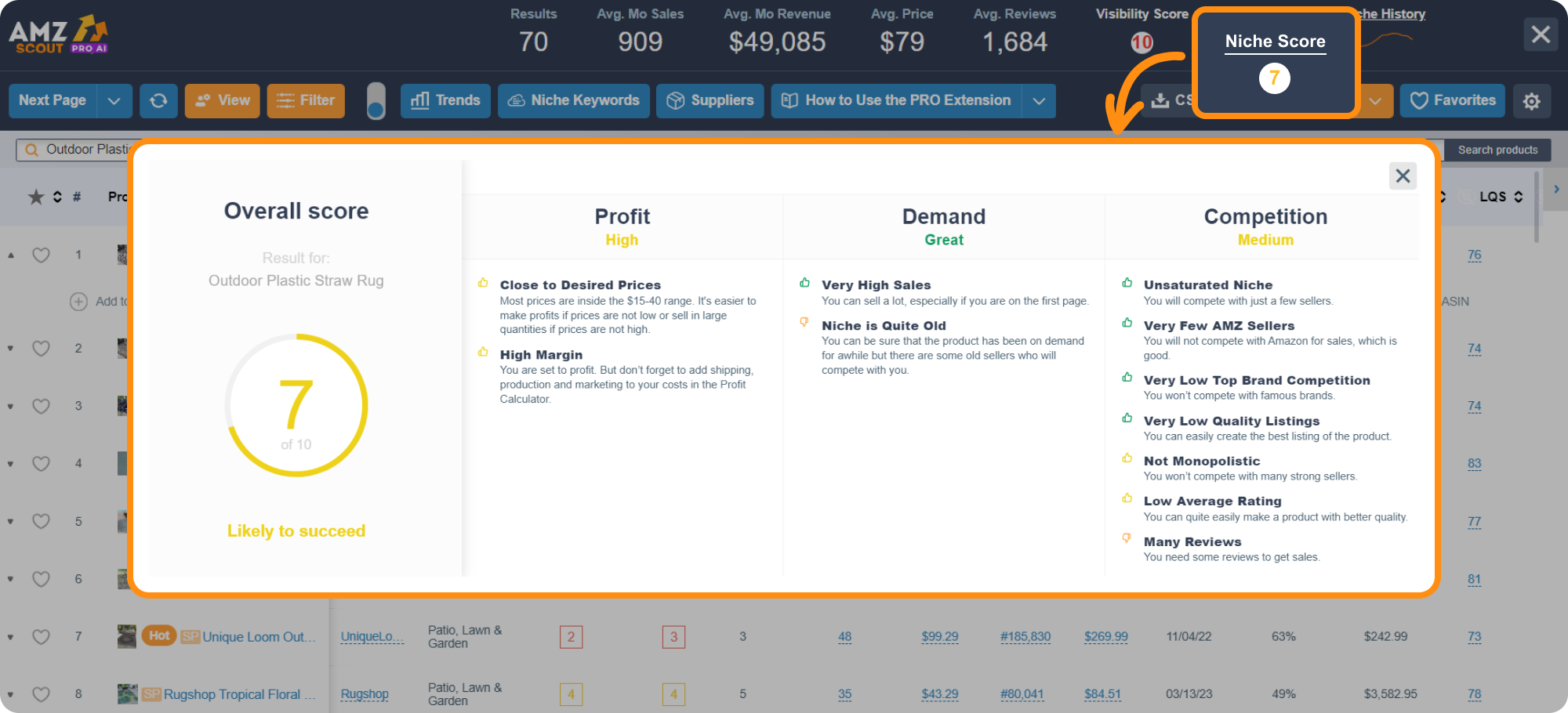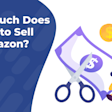
How Much Can You Make Selling on Amazon in 2025?
Many people become Amazon sellers because they believe they can make a lot of money selling products on this online marketplace. But is this really the case? How much do Amazon sellers actually make? Below, you’ll find out the answer to this question and learn different ways to boost your profits.
Table of contents
How Much Does the Average Amazon Seller Make?
It’s tricky to determine an exact income amount you can earn because selling on Amazon can include various business options. A seller’s costs will vary depending on the type of products they sell, the quantity they sell, and the prices they charge.
With this in mind, the average Amazon seller earns between $2,000 and $7,000/month. This leads to annual earnings equivalent to approximately $100,000/year.
Admittedly, there is a huge difference between $2,000 and $7,000. But, the variety of online sellers vary widely because some sell products as a side gig while others focus on their Amazon business full-time, and some sellers run a business with staff.
Profit margins also vary significantly, but can average between 10 to 20%. Again, this wide range comes from the cost of sourcing and shipping goods and how much you spend on advertising.
Recent statistics show additional context:
According to data from Amazon itself, independent sellers in the U.S. averaged more than $290,000 in annual sales in 2024.
Regarding how quickly profitability is achieved: about 58 % of sellers become profitable within their first year(with roughly 22 % in under 3 months, 16 % in 3–6 months, and 20 % in 6–12 months) according to survey data from the Amazon Small Business Empowerment Report..
On average, new sellers are estimated to make around $30,000 in annual profit in early years, per Red Stag Fulfillment’s analysis of seller earnings..
Regarding the size of the marketplace: there are about 9.7 million sellers globally, with roughly 1.9 million in the U.S.
The income of every seller is also based on the hard work they put in, external conditions, and a bit of luck. However, anyone can start selling on Amazon, regardless of whether they have skills or prior experience.
Here’s a breakdown of factors that can impact your profits:
Type of product sold
Number of products sold
Prices you charge for products
Cost of the product
Competition
The seller’s marketing skills
Not all products, markets, or sellers are built the same. Recognizing what works effectively is what differentiates sellers that make a few hundred dollars/month from those who earn a few thousand/month. Below, you’ll find out more about what it takes to become a profitable Amazon seller.
How to Make More Money on Amazon as a Beginner
If you want to increase your potential profits on Amazon, you need to conduct product research. By understanding more about which products are most profitable, you can make good money on Amazon.
These two tools can help you gain a deeper understanding of products to sell: the AMZScout Product Database and PRO Extension.
How to Use the AMZScout Product Database to Create a List of Potential Products
The AMZScout Product Database is a search engine for finding products. This search tool contains detailed information (like sales metrics) about millions of products available on Amazon.com.
Here’s how you use it:
Step 1. Go to the AMZScout Product Database page. To use this page, you’ll need to create a free account, which lets you enjoy a free trial for the service.
Step 2. Enter your criteria at the top to narrow down what kind of product you want. You can select from among 24 product categories, include keywords, and set specific prices. You can also use the product selections tool to find the best products in these categories.
Step 3. Click “More filters” for additional details. Clicking “More filters” opens a more detailed search, which includes net filters, estimated revenue, weight, and the number of other sellers for a given product. You can also check out new or trending products for a more detailed search.
Step 4. Click the “Find products” button to see your results. Clicking “Find products” in the bottom-right corner generates your results. From there, you can make a list of your options or save them for our next step.
Create a list of products you might consider selling.
With more research, you can narrow your options down to your favorites. Then, we recommend you enhance your research even further using the PRO Extension.
How to Use the AMZScout PRO AI Extension to Ensure You Choose Profitable Products
The AMZScout PRO AI Extension is a Google Chrome extension that works as you search the Amazon site. The PRO AI Extension focuses on finding profitable products and providing information about competition levels and earnings.
Here’s how you can use it:
Step 1. Go to the AMZScout PRO AI Extension Chrome Page. Then, click the “Add to Chrome” button in the upper-right corner. If you haven’t already, you’ll be prompted to create a free account after you install the extension.
Step 2. Go to Amazon.com and start searching. Use the regular Amazon search bar to find products (like those from your Product Database research).
Step 3. Open the Extension. Clicking the AMZScout icon on the lower-left corner of your screen will open the Extension. You can do this when your Amazon.com search results are done loading.
Step 4. Check the data. When the app opens, you’ll find a stat compilation at the top of the screen. Pay close attention to the average net margin, which indicates your potential profit.
Step 5. Focus on the profits of individual products. Below the stat compilation is a table, including data on your net margin. You can click the table to sort by the highest margin. Of course, you’ll also want to consider other stats during your research.
Step 6. Use the built-in profit calculator. Next, click the “Profit Calculator” and enter the cost-related data for your item. This includes product costs and additional per-unit costs. FBA costs are calculated automatically. This is your final measure of potential profits.
Step 7. Don’t forget the other metrics! The PRO Extension has a neat combination set of features called Niche Score and Product Score. Both of these give you a general idea of how easy a product is to sell. You also need to pay attention to other stats, like reviews, when picking your products.
Combining the Product Database and PRO AI Extension lets you create a list of products and determine how much you can make. It’s like having a research assistant without needing to pay them an exorbitant price. You can save a lot of time and money when collecting product data by using these tools.
Is Selling on Amazon Profitable?
Most sellers on Amazon report that their businesses are profitable, which means they generate at least $500/month in average sales. Profitability can vary depending on how you source, ship, and deliver your products.
Below, you’ll learn more about the most popular sourcing strategies and how your earnings and profit margins might change.
Retail and Online Arbitrage
Online or retail arbitrage is when you take goods from a retail store and resell them at a higher price. Arbitrage makes money by leveraging sales, finding discounts, and taking advantage of any situation that might result in a reduced price.
Potential profits (with the possibility of earning more or less):
5-10% net profit margin
$100-1,000/month in profits
High potential profits come from finding great deals, so income can be inconsistent
Startup costs are as low as $100, but time investment can be high
Dropshipping
Dropshipping is when you resell products fulfilled by a third-party vendor. This means your supplier handles all shipping and storage, while you handle listing management and customer service.
Potential profits (with the possibility of earning more or less):
10-15% net profit margin
$500-2000/month in profits
Startup costs are almost zero, but you might have to pay suppliers a monthly fee (depending on which one you pick)
You don't have to keep inventory, which can save you a lot of money
Wholesale
Wholesale is when you purchase goods from a well-known brand for resale. Goods are purchased in bulk at wholesale prices, allowing you to make a profit.
Potential profits (with the possibility of earning more or less):
15-25% net profit margin
$1,000-10,000/month in profits
Startup costs are generally higher because you need to make a bulk purchase
Operating costs are less because you don’t need to worry about manufacturing
Private Label with FBA
Private Label with FBA combines private label sales and Fulfillment By Amazon. Having a private Label means you hire a manufacturer to make a product with your brand name. FBA is Amazon’s fulfillment service that handles all aspects of shipping, storage, and customer service for you.
Potential profits (with the possibility of earning more or less):
20-40 % net profit margin
$2,000-7,000/month in profits
Requires the most startup investment money and time because you must work with manufacturers
Potential earnings are the highest because you can build brand loyalty more easily
Conclusion
If you want to be an Amazon seller, having accurate expectations is important. While you can make up to $10,000/month with the right product and skills, only some sellers reach that goal, but that’s no reason not to try.
Remember that despite taking on the “Amazon seller” mantle, this business is yours. You own the product and all of the profits that come with it. And, if things change, you can take these skills to any platform you choose.
In order to grow and acquire these skills, you need to get started, and you can do that with selling anything from books to clothes. Thankfully, Amazon is the perfect place to start, learn, stumble, and get back up again. We hope this guide helps you find awesome, profitable products during your journey.
FAQs
How much do Amazon sellers make on average in 2025?
Amazon sellers typically earn between $2,000 and $7,000 per month. Earnings vary depending on factors like product type, pricing, and business size. Some part-time sellers make a few hundred dollars monthly, while experienced, full-time sellers can reach six-figure annual profits with consistent marketing and smart inventory management.
What percentage of Amazon sellers are profitable?
Around 89% of Amazon sellers are profitable, with more than half reporting profitability within their first year. Profit levels depend on product margins, advertising costs, and pricing strategy. Sellers who research demand, source efficiently, and reinvest in marketing typically sustain long-term growth and achieve stronger profit margins over time.
How long does it take for most sellers to become profitable on Amazon?
Most Amazon sellers become profitable within 3 to 12 months. About 22% achieve profitability in under 3 months, 16% in 3-6 months, and 20% in 6-12 months. Success speed often depends on choosing the right products, managing inventory effectively, and optimizing listings for conversions and visibility in Amazon’s search algorithm.

